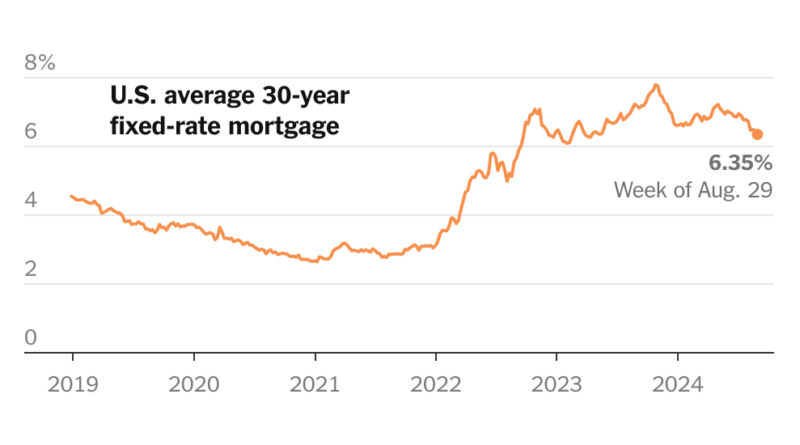Average US rate on 30-year mortgage rises slightly, ending seven-week decline
The average rate on a 30-year mortgage in the U.S. rose slightly this week, ending a seven-week decline that helped lower borrowing costs for homebuyers ahead of the spring buying season.
The rate averaged 6.65% this week, down from 6.63% last week, mortgage buyer Freddie Mac reported Thursday. A year ago, it averaged 6.74%.
Borrowing costs on 15-year fixed-rate mortgages, popular with homeowners looking to refinance to a lower rate, also rose this week. The average rate rose to 5.8% from 5.79% last week. A year ago, the average was 6.16%, according to Freddie Mac.
Mortgage rates are influenced by a variety of factors, including bond market investors’ expectations for future inflation, global demand for U.S. Treasuries and the Federal Reserve’s interest rate policy decisions.
After rising to just above 7% in mid-January, the average rate on a 30-year mortgage fell through last week, echoing moves in the yield on 10-year Treasuries, which lenders use as a guide to pricing mortgages.
The yield, which was nearly 4.8% in mid-January, has largely fallen since then, reflecting concerns about economic growth and the fallout from the Trump administration’s decision to impose tariffs on imported goods from many of the country’s major trading partners. The yield was 4.31% at midday Thursday.
Tariffs could boost inflation, which could translate into higher 10-year Treasury bond yields, which would push up mortgage rates. This is because bond investors demand higher yields while inflation remains elevated.
On Thursday, the Labor Department announced that U.S. wholesale inflation last month was more moderate than economists expected. This followed an equally encouraging report the day before, showing that consumer inflation slowed in February for the first time since September.
Still, the Federal Reserve, which is scheduled to release its latest interest rate policy update next Wednesday, has signaled that it intends to take a more cautious approach in assessing the direction of inflation and the impact that the Trump administration’s policies on trade, taxes, and other fronts will have on the economy.
So far, the drop in rates has not improved affordability for many potential homebuyers, keeping the housing market in a sales slump.
Still, as rates have fallen in recent weeks, more potential homebuyers have applied for a mortgage loan.
Last week, mortgage applications increased 11.2% from the previous week and 31% year-over-year, according to the Mortgage Bankers Association. Additionally, home loan refinancing applications increased 16%, according to the MBA.
While a spike in mortgage applications is typical this time of year, the sharp increase suggests that lower mortgage rates are encouraging potential homebuyers.
Homebuyers who can afford to purchase at current mortgage rates or avoid them altogether by paying cash will also benefit from a wider selection of properties on the market. The inventory of homes for sale has increased significantly compared to last year, and prices are rising more slowly nationwide and declining in many metropolitan areas, including Austin, Dallas, and Tampa, Florida.
“The combination of slightly lower mortgage rates and improving inventory is a positive sign for homebuyers in this crucial spring homebuying season,” said Sam Khater, Freddie Mac’s chief economist.
Copyright 2025 The Associated Press. All rights reserved. This material may not be published, broadcast, rewritten, or redistributed.

